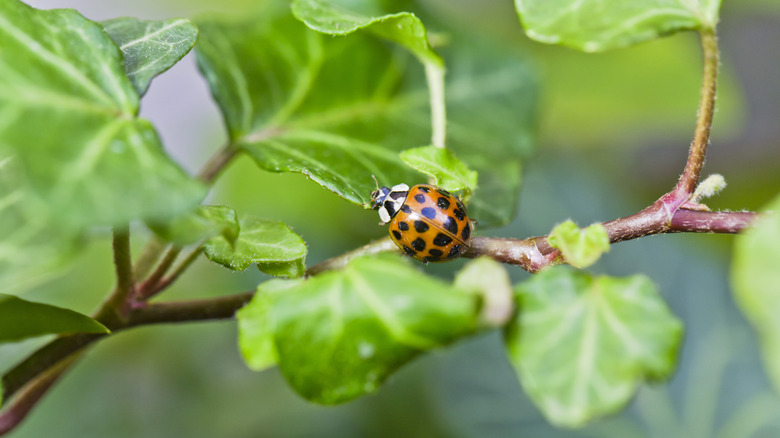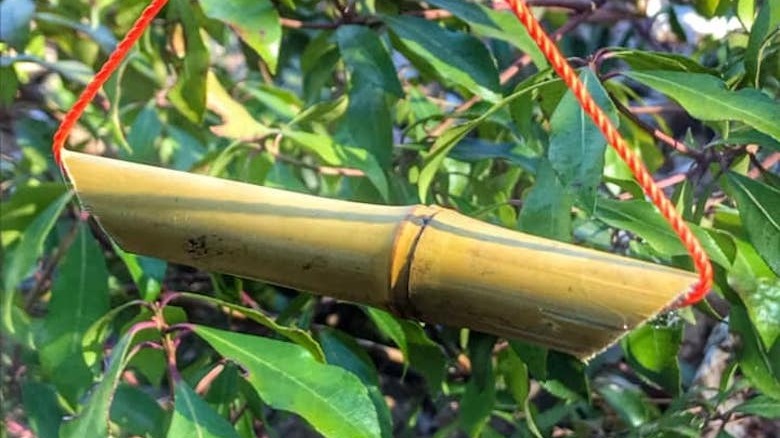Encourage Beneficial Ladybugs To Visit Your Garden With This DIY Feeder
Desperate to keep pesky aphids and spider mites off your plants? You need some ladybugs in your garden, stat! These hungry critters and their famished larvae will make short work of any insect pest infestations. The tricky thing is you need to attract them to your garden to get them working for you. Even if you buy ladybugs for natural garden pest control (yes, you can do that), there's no guarantee the dotty plant saviors will stick around once they've eaten all the bugs. You need a ladybug feeder, which is thankfully easy to craft. All you need is a short, hollow piece of bamboo or PVC pipe, a drill, some sturdy string, and a handful of raisins.
We all know that ladybugs — ladybirds, ladybeetles, or whatever you prefer to call them — and their teenage offspring like to munch on mealybugs and other exoskeletal garden vermin. It turns out these spotted beetles (for that's what they are) also have a bit of a sweet tooth. They're attracted to pollen, nectar, and the honeydew produced by aphids and other stem and leaf-sucking insects. That's why raisins are recommended for ladybug feeders. In fact, people who keep ladybugs as pets feed them raisins soaked in water.
Get crafting
Your primary material is lengths of untreated bamboo or PVC pipe. Buy 1-foot or 10-inch lengths if you can find them, saving you a step. Otherwise, you'll need to cut longer lengths down to this size. Look for piping anywhere between half-and-inch to 2 inches in diameter. Walmart sells a pack of three 6-foot, 1.5-inch round natural yellow bamboo poles for $24.99. You'll also need some durable twine or thin metal chain, an electric drill and drill bit a little thicker than your twine or chain, and a handsaw with a few extra wood blades. If you want to decorate the outside of your ladybug feeder, do so with eco-friendly paint or waterproof colored markers.
Before you start cutting, put on a pair of cut-proof gloves. Sawing a curved surface can be challenging, and your blade might slip. Then, using your handsaw, cut the ends of each short length of bamboo or PVC pipe on an angle — the longer and shorter sides should match. This creates a little roof at each end to keep the rain out. It also helps the ladybugs find the entrance. Drill holes at each end — on the long side of the angles — and thread your twine through, knotting it on the inside. Pop in a few raisins and hang your ladybug feeder near plants infested with six-legged pests so your new pest controllers have something else to snack on once they're done with the dried fruit.

